Box fumibako
A fumibako (文箱) or elongated lacquered box, rounded at the edges, with gold decoration in low relief, the so-called hira maki-e 平蒔絵 technique. Along each side of the lower part of the box are rings through which two separate braided strings were tied. The strings (missing from this object) were tied into a bow on top of the lid of the box, preventing it from opening during transport. The fumibako was used to store and deliver important letters or documents in the form of a scroll. It is made of paulownia wood (Lat. Paulownia tomentosa or Paulownia imperialis), which is light, smooth and hard, does not absorb water and, above all, is extremely fire resistant, as its flash point is higher than that of other tree species; its use enhanced the functional purpose of the object.
The design on the outside of the lid and of the base is the coat of arms of the Tokugawa 徳川 family, which ruled Japan during the Edo period. ... more
A fumibako (文箱) or elongated lacquered box, rounded at the edges, with gold decoration in low relief, the so-called hira maki-e 平蒔絵 technique. Along each side of the lower part of the box are rings through which two separate braided strings were tied. The strings (missing from this object) were tied into a bow on top of the lid of the box, preventing it from opening during transport. The fumibako was used to store and deliver important letters or documents in the form of a scroll. It is made of paulownia wood (Lat. Paulownia tomentosa or Paulownia imperialis), which is light, smooth and hard, does not absorb water and, above all, is extremely fire resistant, as its flash point is higher than that of other tree species; its use enhanced the functional purpose of the object.
The design on the outside of the lid and of the base is the coat of arms of the Tokugawa 徳川 family, which ruled Japan during the Edo period. One of the most famous coats of arms of the family is called Tokugawa-aoi 徳川葵 which depicts three leaves of aoi 葵 (hollyhock), pointing to the centre of a circle, symbolising loyalty. The shape of this coat of arms is also found on the joint of the two rings. In the lower part of the box there is an additional coat of arms consisting of four interconnected pine needles in a circle, which could belong to the group of matsuba 松葉 or “pine needle” coats of arms. It is probably the family crest of a samurai who was not so well known. The coats of arms on the outside of the lid and box represent the clan or ruling body, while the coat of arms inside the box denotes a samurai. From this we can conclude that the fumibako box was probably used to transport or store official government documents. On the outer edges of the box lid, we can see a stronger or additional application of varnish, which contributes to the aesthetics of the box, rounding off its elegant lines and giving it solidity. The base of the box is engraved with the character Toya Imuha (トヤイムハ) in the Japanese syllabary katakana, which is written in the vertical script form or tategaki 縦. This font is commonly used to write foreign names, especially foreign proper names and geographical names. We can infer that this is a foreign (personal) name, probably of a broker or seller. (KH, MJ)
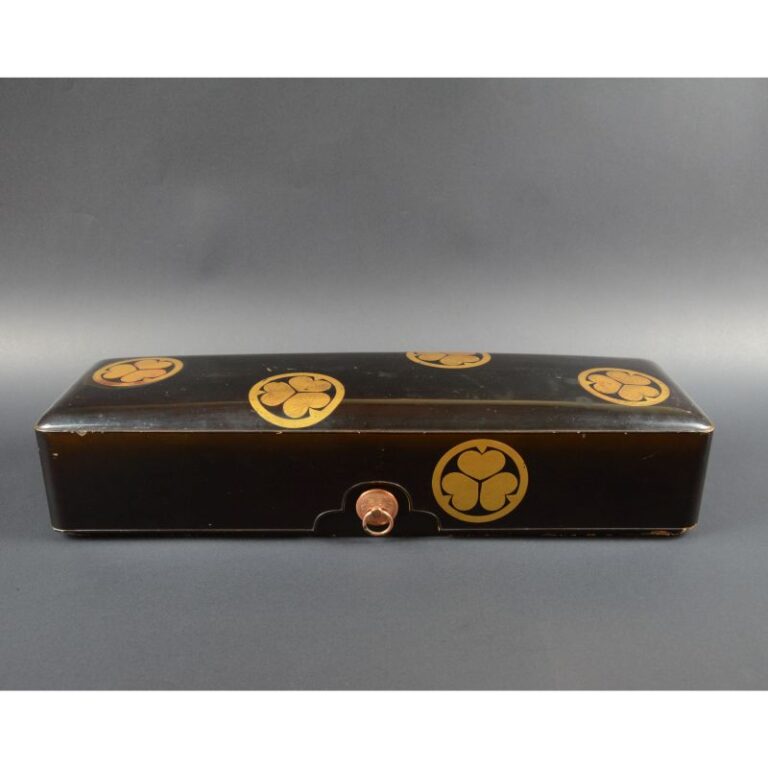

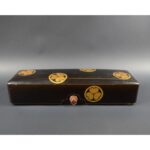
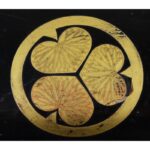

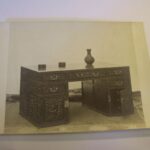








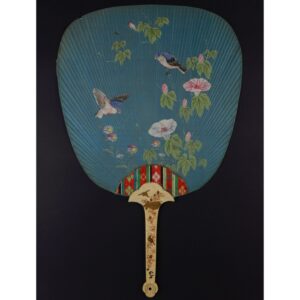
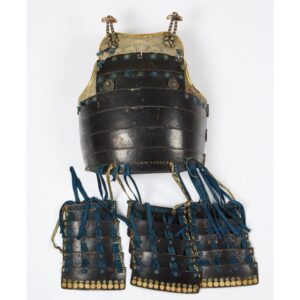

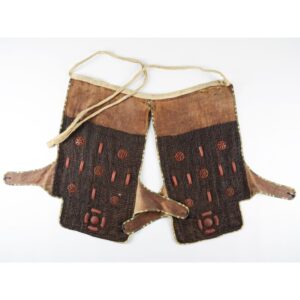






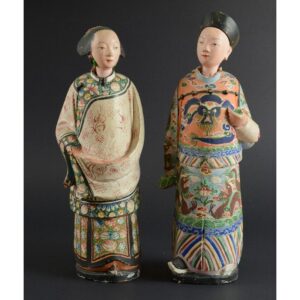











Do you have a comment or additional information about the subject?